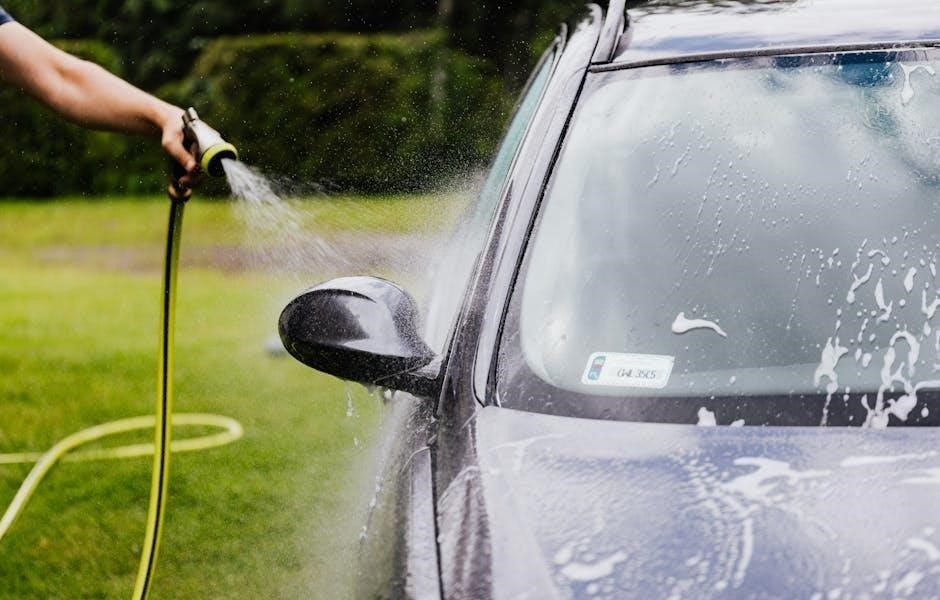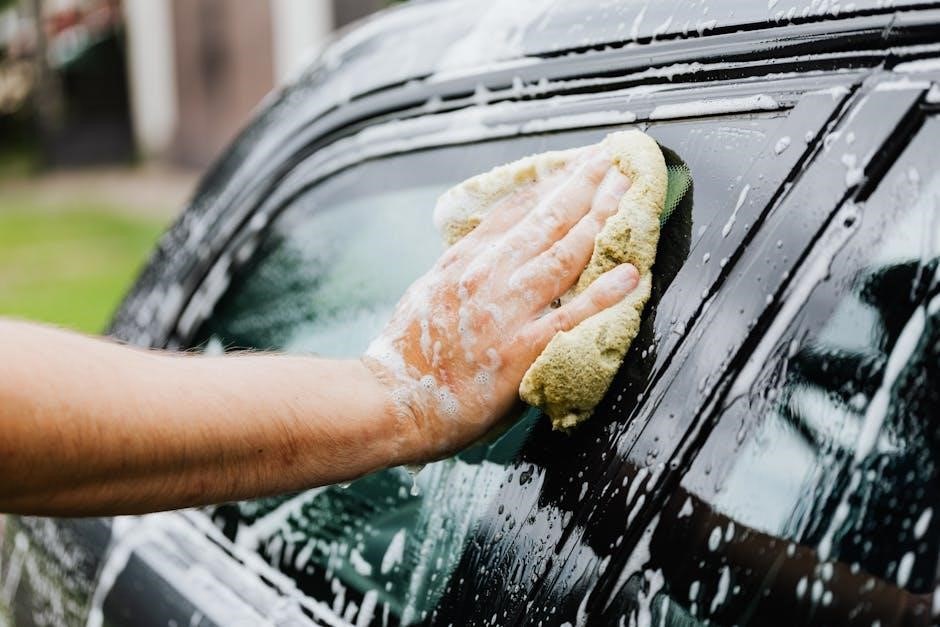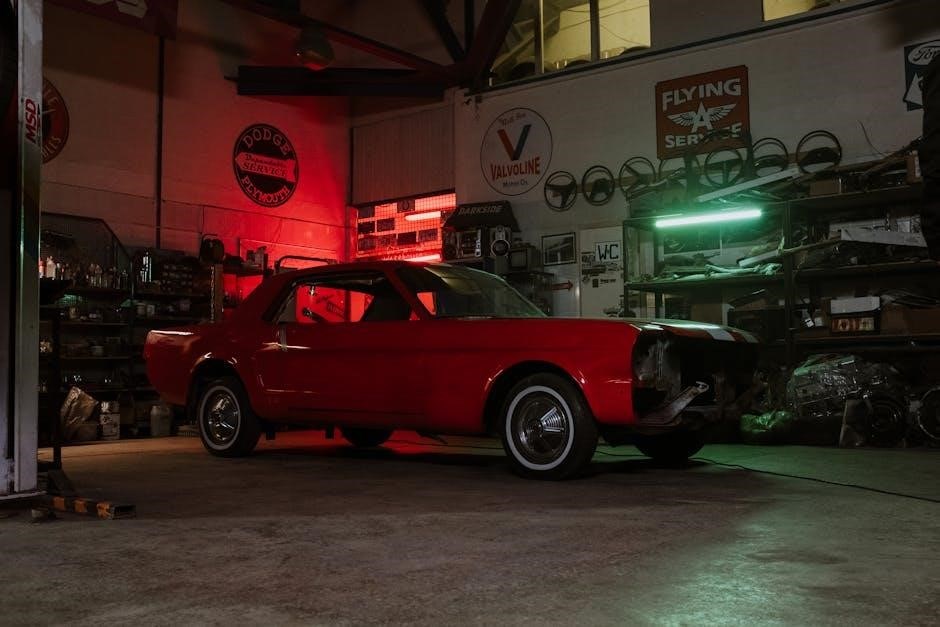
full auto modification manual
Full auto modification involves converting firearms to automatic operation, requiring precise technical skills and legal compliance. This manual provides detailed guidance for enthusiasts and professionals, ensuring safety and adherence to regulations while exploring the complexities of full auto systems.
Purpose of the Manual
This manual serves as a comprehensive guide for firearm enthusiasts and professionals, detailing the process of modifying semi-automatic weapons to fully automatic operation. It provides step-by-step instructions, safety protocols, and legal considerations to ensure responsible and lawful modifications. The guide covers various firearm models, including the AR-15, UZI, and M1 Carbine, offering detailed diagrams and technical specifications. Its primary aim is to educate users on the intricacies of full auto systems, emphasizing safety, precision, and compliance with firearms regulations. Designed for both novice and experienced users, the manual ensures that modifications are performed accurately and legally, avoiding potential risks and legal repercussions.
Importance of Safety and Legal Compliance
Safety and legal compliance are paramount when engaging in full auto modification. Improper modifications can lead to catastrophic accidents, legal consequences, and harm to oneself or others. Adhering to local, state, and federal firearms regulations is essential to avoid criminal charges and ensure ethical practices. Always use approved components and follow established guidelines to maintain weapon reliability and functionality. Legal compliance protects both the modifier and the end-user, preventing misuse and illegal distribution. Safety protocols must be strictly followed during the modification process to prevent accidents. Understanding and respecting these principles ensures responsible firearm ownership and use, safeguarding lives and legal standing.

Understanding Full Auto Modifications
Full auto modifications involve altering firearms to enable continuous fire. These modifications require precise engineering and design changes to achieve automatic functionality, enhancing the weapon’s rate of fire.
What is a Full Auto Modification?
A full auto modification is the process of altering a firearm to enable fully automatic operation. This involves modifying the trigger mechanism, potentially adding a selector switch to choose between semi-automatic and automatic modes, and reinforcing internal components to handle the increased rate of fire. The modification typically bypasses or alters the disconnector, allowing continuous firing with a single trigger pull. Legal considerations are crucial, as converting a firearm to fully automatic often requires proper licensing and compliance with local, state, and federal laws. Safety features may also be enhanced to prevent accidental discharges. Understanding the mechanical and legal aspects is essential before attempting such modifications.
Key Components of Full Auto Systems
A full auto system relies on several critical components to function effectively. The trigger mechanism must be modified to allow continuous firing, often involving a disconnector adjustment. A selector switch is typically added to transition between semi-automatic and fully automatic modes. The bolt carrier group and gas system are optimized for higher cyclic rates. A reinforced buffer and spring are essential to manage the increased recoil and wear. Additional components like an auto-sear or trip lever may be required, depending on the firearm design. Proper alignment and precision machining of these parts ensure reliability and consistent performance. Understanding these components and their interactions is vital for a successful modification.

Legal Considerations
Modifying firearms to fully automatic operation is heavily regulated and often illegal without proper authorization. Strict penalties, including fines and imprisonment, apply for non-compliance. Always consult local laws.
Overview of Firearms Regulations
Firearms regulations, particularly regarding full auto modifications, are stringent and vary by jurisdiction. In the United States, the Bureau of Alcohol, Tobacco, Firearms, and Explosives (ATF) tightly controls fully automatic weapons under the National Firearms Act (NFA). These regulations classify fully automatic firearms as highly restricted, requiring extensive paperwork, background checks, and taxes. Modifications that enable fully automatic functionality are illegal without proper authorization, and violations can result in severe penalties, including criminal charges. International laws also impose strict controls, often outright banning civilian ownership of fully automatic weapons. Understanding and adhering to these regulations is crucial to avoid legal repercussions. Always consult legal experts before attempting any modifications.
Permits and Licenses for Full Auto Weapons
Obtaining permits and licenses for full auto weapons is a complex and highly regulated process. In the United States, the ATF requires a rigorous application process under the National Firearms Act (NFA). A completed ATF Form 4, fingerprinting, and a $200 tax stamp are typically required for ownership. Background checks are mandatory, and approval times can be extensive. Certain states prohibit civilian ownership of fully automatic weapons, regardless of federal permits. Licensed firearms dealers with a Class 3 Federal Firearms License (FFL) are authorized to handle and sell fully automatic weapons. Additionally, ownership through trusts or legal entities is common to comply with regulations. Always verify local, state, and federal requirements before pursuing ownership or modifications.

Volume 1: AR-15 Modification Manual
Welcome to Volume 1, focusing exclusively on the AR-15 rifle. This comprehensive guide provides detailed instructions for modifying your AR-15 to achieve full automatic functionality, ensuring compliance with legal standards and safety protocols. The manual covers essential steps, tools, and components required for a successful conversion. Whether you’re a novice or experienced, this volume offers clear, step-by-step guidance to help you navigate the complexities of AR-15 full auto modification.
The AR-15 is one of the most popular and versatile firearms platforms in the world, widely used for both recreational and tactical purposes. This section focuses on converting a standard AR-15 into a fully automatic weapon, a process that requires careful planning, precision, and adherence to legal guidelines; The goal of this manual is to provide a detailed, step-by-step guide for enthusiasts and professionals alike, ensuring a safe and successful modification. It covers the essential tools, components, and techniques necessary to achieve full auto functionality while emphasizing the importance of compliance with local and federal firearms regulations. This guide is designed for educational purposes only and should be used responsibly.
Key Modifications for AR-15 Full Auto
Converting an AR-15 to full auto requires several critical modifications to its core components. The trigger group is a primary focus, as it must be upgraded to a full-auto capable system. This includes installing a full-auto trigger, selector switch, and auto sear. The selector switch allows seamless transition between semi-automatic and fully automatic modes. Additionally, the bolt carrier group (BCG) must be modified or replaced to handle the increased stress of continuous fire. The disconnector is another essential component that needs adjustment to enable uninterrupted firing. Proper modification of the lower receiver’s internal controls is also necessary to ensure reliable operation. These changes demand precision machining and experienced assembly to maintain safety and functionality.
Tools and Materials Required
Performing a full auto modification on an AR-15 demands specific tools and materials to ensure accuracy and safety. Essential tools include a milling machine for modifying the lower receiver, a drill press for precision drilling, and a set of high-quality punches and hammers for component fitting. A torque wrench and screwdriver set are also necessary for securing parts. Materials needed include high-strength steel for fabricating the auto sear and hammer, specialized fasteners, and a supply of gunsmithing blue for fitting components. Additionally, lubricants and cleaning solvents are required to maintain tooling and prevent wear. These tools and materials are critical for achieving a reliable and functional full auto conversion.
Step-by-Step Guide to AR-15 Modification
Begin by disassembling the AR-15, ensuring all components are safely separated. Next, modify the lower receiver to accommodate the full auto sear mechanism, using precision milling to create the necessary recesses. Install the auto sear and hammer, aligning them properly to ensure smooth operation. Adjust the trigger group to function in both semi-automatic and fully automatic modes. Reassemble the firearm, carefully testing each component for proper function. Conduct a series of safety checks to verify reliability and performance. Finally, test-fire the modified AR-15 in a controlled environment, adhering to all safety protocols and legal regulations. This process requires precision and adherence to detailed instructions to ensure functionality and compliance;

Volume 2: UZI Modification Manual
This section details the process of converting a semi-automatic UZI into a fully automatic firearm. It covers receiver modifications, trigger system adjustments, and safety considerations.
Overview of UZI Full Auto Conversion
The UZI submachine gun is a popular choice for full auto conversion due to its compact design and reputation for reliability. This section provides an overview of the process, focusing on the key steps and considerations for transforming a semi-automatic UZI into a fully automatic firearm. The primary goal is to enable continuous fire capability while maintaining the weapon’s original functionality and safety features. Modifications typically involve altering the trigger pack, installing an auto sear, and ensuring proper alignment of internal components. It’s essential to understand the mechanical and legal aspects before proceeding, as full auto conversions are heavily regulated. This overview sets the stage for detailed instructions in subsequent sections.
Specific Modifications for UZI

Converting a UZI to full auto requires precise modifications to its internal mechanisms. The primary focus is on the trigger pack and fire control group. Installing an auto sear is critical to enable fully automatic functionality. Additionally, the bolt carrier group must be modified to ensure reliable cyclic operation. The barrel and chamber should be inspected and possibly reworked to handle the increased stress of full auto fire. Lastly, the magazine well and feed ramp may need adjustments to prevent jamming during rapid firing. These modifications must be executed with extreme care to maintain reliability and safety, adhering strictly to design specifications and legal standards. Proper tools and expertise are essential to achieve a functional and durable full auto setup.
Tools and Materials for UZI Modification

To modify a UZI for full auto functionality, specific tools and materials are required. Essential tools include a set of precision punches, a hammer, a vice, and a screwdriver set. A welding torch and metal files may be needed for custom adjustments. Materials such as high-strength springs, sear engagement pins, and lightweight aluminum or steel for internal components are crucial. Additionally, lubricants and cleaning solvents are necessary to maintain functionality. Safety gear, including safety glasses and gloves, is recommended to prevent injuries during the process. Proper alignment jigs and gauges ensure accurate modifications. All tools and materials must meet specifications to guarantee reliability and safety in the final assembly.

Volume 5: M1 Carbine to M2 Modification Manual
This section provides a detailed guide for converting the M1 Carbine to an M2 fully automatic configuration, including key modifications and technical specifications for enhanced firepower and reliable operation.
Welcome to the M1 Carbine to M2 modification guide, designed for firearms enthusiasts and collectors seeking to convert their M1 Carbine into a fully automatic M2 model. This section introduces the historical background and purpose of the M2 variant, originally developed during World War II for military use. The M2 Carbine offers enhanced firepower with its selective-fire capability, making it a desirable modification for those familiar with its operation. This guide provides a comprehensive overview of the conversion process, ensuring a safe and accurate transformation. It is essential to understand the technical and legal aspects before proceeding, as full auto modifications require precise craftsmanship and compliance with regulations.
Key Steps for M1 Carbine Modification
Converting an M1 Carbine to an M2 involves several critical steps to ensure functionality and safety. First, disassemble the firearm to access internal components, taking care to remove the stock and action. Next, replace the semi-automatic trigger group with a full-auto compatible assembly, including a disconnector and selector switch. Install a heavy-duty operating spring and modify the bolt to accommodate fully automatic firing. Finally, reassemble the weapon and test its operation to ensure proper cycling and selector functionality. Each step requires precision to maintain reliability and prevent malfunctions. Always follow detailed diagrams and instructions to achieve a successful conversion.
Required Tools and Materials
To modify an M1 Carbine to M2 specifications, specific tools and materials are essential. Begin with basic firearms tools, such as screwdrivers, punches, and a hammer. A trigger pull gauge ensures proper adjustment of the auto sear. Specialized tools include a selector switch installer and a bolt modification jig. Materials required include a heavy-duty operating spring, a full-auto bolt carrier, and an auto sear. Optional tools like a bench vise and arbor press can aid in disassembly and reassembly. Always use high-quality components to maintain reliability. Safety gear, such as safety glasses, is a must. Ensure all parts are compatible with the M2 model to avoid functional issues. Proper organization of tools and materials is key to a smooth modification process.

Additional Resources
Explore books, online forums, and video tutorials for detailed guidance on full auto modifications. These resources provide expert tips and hands-on instruction for successful projects.
Recommended Books and Manuals
For in-depth knowledge on full auto modifications, several books and manuals are highly recommended. Titles like The Official AR-15 Manual and Full Auto Conversions: A Complete Guide provide detailed instructions and diagrams. Authors such as Patrick Sweeney and other firearms experts offer valuable insights. These resources cover legal aspects, technical specifications, and step-by-step modification processes. They are essential for both professionals and enthusiasts. Additionally, manuals like The Gunsmith’s Bible and Firearms Assembly: Volume 1 offer comprehensive guidance. These books are available on online platforms like Amazon and specialty firearm stores. They are invaluable for ensuring modifications are done safely and correctly.
Online Forums and Communities

Online forums and communities are invaluable resources for enthusiasts of full auto modifications. Platforms like Reddit’s r/gunsmithing and specialized firearm forums offer extensive discussions, tutorials, and experiences shared by experts and hobbyists. Websites such as AR15.com and M4Carbine.net host dedicated sections for full auto conversions, providing detailed insights and troubleshooting tips. These communities allow users to ask questions, share projects, and learn from others. Additionally, Facebook groups and niche forums cater to specific firearm models, fostering collaboration and knowledge exchange. Engaging with these platforms ensures access to real-world advice, helping enthusiasts stay informed and connected. Always prioritize safety and legal compliance when seeking or sharing modification guidance online.
Video Tutorials and Guides
Video tutorials and guides are essential for visual learners seeking to understand full auto modifications. YouTube channels like Military Arms Channel and Garand Thumb offer detailed step-by-step instructions for various firearm modifications. These videos often include close-ups, making complex processes easier to follow. Websites like Full30 and BITChute also host firearm-related content, providing hands-on demonstrations of full auto conversions. Many tutorials cover specific models, such as the AR-15 or UZI, ensuring viewers can apply the knowledge to their projects. Additionally, video guides often highlight common mistakes to avoid, enhancing safety and efficiency. Always ensure the content aligns with legal standards and safety protocols before attempting any modifications.
Final Thoughts on Full Auto Modification
Full auto modification is a complex and highly regulated process that demands meticulous attention to detail, adherence to legal standards, and a commitment to safety. This manual has provided a comprehensive guide to understanding and executing modifications for various firearms, such as the AR-15, UZI, and M1 Carbine. It is crucial to approach these modifications with respect for the law, safety protocols, and the potential risks involved. Always seek professional guidance when unsure, and prioritize responsible ownership and use. By following the outlined steps and adhering to best practices, enthusiasts can achieve successful full auto conversions while maintaining legal and ethical standards. Continuous learning and community engagement are key to mastering this craft.
Related Posts

washington driver’s manual
Get ready to drive in Washington! Discover the rules of the road, licensing steps, and tips to pass your test with the official Washington driver’s manual.

bls manual ebook
Discover the comprehensive BLS Manual Ebook, your go-to guide for mastering Basic Life Support techniques. Easy to understand and perfect for healthcare professionals.

proform 2000 treadmill manual
Get the most out of your workout! Download the ProForm 2000 treadmill manual for easy setup, troubleshooting, and maintenance tips.